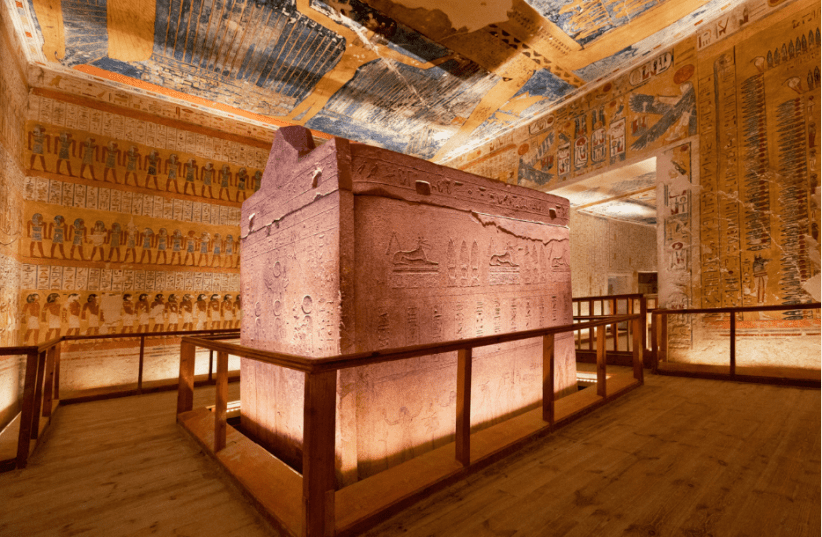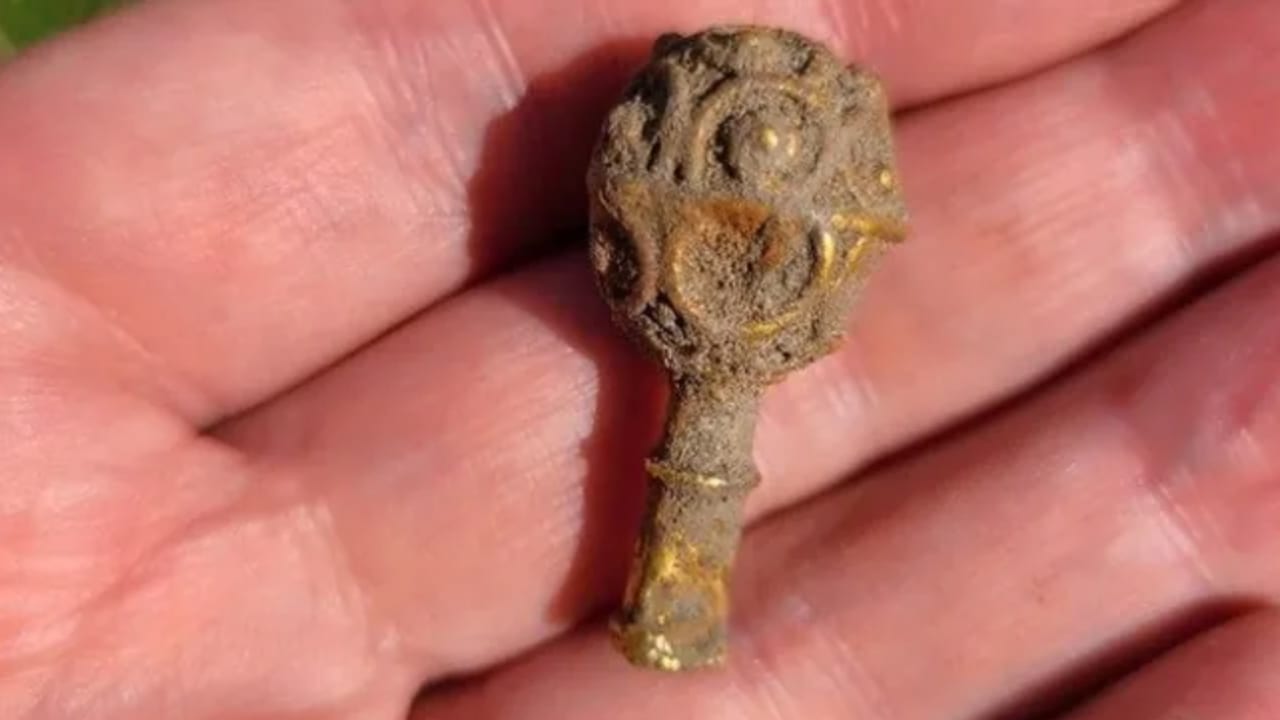By JERUSALEM POST STAFF
Researchers identified walking impairment and malarial disease sustained by Tutankhamun, supported by the discovery of canes and an afterlife pharmacy in his tomb.
A recent DNA analysis has brought experts closer to understanding what killed King Tutankhamun, revealing genetic evidence that his premature death was partly due to repeated malaria attacks.
King Tutankhamun, who ruled Egypt for nine years before dying at the age of 18, remains one of the most famous pharaohs in history, mainly due to the discovery of his tomb in 1922, which became a sensation. Experts have been examining his remains since their discovery, seeking answers to the mystery surrounding his sudden death more than 3,300 years ago.
The recent findings suggest that malaria, a disease transmitted by mosquitoes and today treatable, led to the death of King Tutankhamun. "The tests show that Tutankhamun had been infected with malaria which may have killed him," said Tim Batty, general director of the Tutankhamun exhibition. "In addition to genetic information on Tut's family connections, the DNA tests have revealed further information such as diseases and inherited problems that may have afflicted Tutankhamun," Batty added.
The analysis identified that King Tutankhamun's grandparents were Pharaoh Amenhotep III and his queen Tiye, both of whom also succumbed to malaria.
While malaria is successfully treated with modern medical drugs, in the ancient world, it often became a death sentence for those who contracted it. When King Tutankhamun contracted malaria over 3,300 years ago, there was no known cure.
The reality is that it's probably more complicated, with a number of factors contributing. King Tutankhamun could have been affected by other health problems, with the break just piling it on the teen.
Previous CT scans found that King Tutankhamun could have necrosis of the left foot. One of these conditions was Köhler disease, a rare bone disorder in the foot of children. Possible conditions include Marfan syndrome, Klinefelter syndrome, Frohlich syndrome, scoliosis, and sickle cell anemia.
"Walking impairment and malarial disease sustained by Tutankhamun is supported by the discovery of canes and an afterlife pharmacy in his tomb," researchers stated.
Some believe that King Tutankhamun was in a fatal chariot accident. Damage to his body suggests that physical trauma caused his demise. The lack of any signs of healing indicated that he had broken his leg shortly before he died, and the compound fracture in his left leg may have caused his death. In a world without antibiotics, King Tutankhamun would have succumbed to his injury.
Some believe that King Tutankhamun was murdered; however, there isn't enough evidence to support this speculation.
A diagnosis in 2012 suggested that King Tutankhamun had temporal lobe epilepsy. Temporal lobe epilepsy may explain religious visions experienced by historical figures. Epilepsy could also cause death, injuries, or choking that may have killed King Tutankhamun.
British archaeologist Howard Carter made one of the greatest archaeological discoveries in history by finding Tutankhamun's almost untouched burial and more than 5,000 artifacts.
King Tutankhamun's tomb contained six disassembled chariots. Many artistic depictions show King Tutankhamun riding a chariot. Chariots were part of leisure for elites in Ancient Egypt.











.jpg)





.png)



